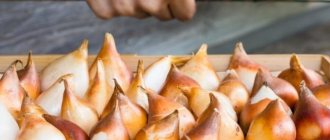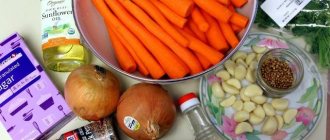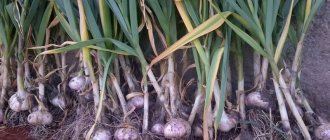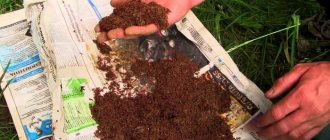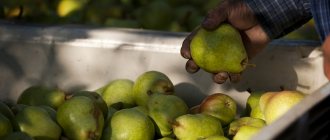As a rule, the carrot harvest ends in mid-September - early October, and you want to enjoy it all winter, until the onset of next spring. Read about the timing and rules for harvesting carrots here.
If the necessary preparations for the winter in the form of dried carrots, as well as dried and even frozen ones, have already been made, then how to preserve the remaining harvest?
How to store carrots and beets for the winter in the cellar? Read about storing beets in the cellar on our website.
Storing carrots in a cellar in winter is not an easy task, since unlike other vegetables, carrots have a very thin skin through which bacteria can easily penetrate .
fungal diseases than other vegetables .
Therefore, in order to keep carrots safe and sound throughout the winter, you need to have considerable knowledge in the field of gardening and gardening.
Previously, we already talked about storing carrots in an apartment, now we’ll talk about saving root vegetables in cellars. If you are new to this field and are just beginning to understand the basics of gardening, then this article is addressed to you.
In it we will explain in detail the basic rules and methods for storing carrots in the cellar in winter. To properly store carrots in a cellar or basement, the following features must be taken into account. How to store carrots for the winter in the cellar?
Preparing the premises
How to prepare a room (basement) before storing carrots in the cellar for the winter? This is not the most difficult task as many might think, but it is very important. If you do not properly prepare the premises for future storage, you run the risk of getting a negative result from your work.
Carrots can easily sprout or rot if they are not provided with the proper conditions.
How to properly store carrots in the cellar? Therefore, in order for the root crop to retain its appearance and taste until the next harvest, you must do the following before storing carrots in the cellar:
- Ventilate the room . It is very important that the storage room for carrots is cool and free of foreign odors.
- Disinfect the room. To do this you will need a 2% solution of lime chlorine. Lime is taken at the rate of 1 kg per 110-140 m2 of surface. After this, the basement walls are sprayed with lime. Important! Disinfection must begin a month before the upcoming storage of carrots.
- Whitewash the walls of the room with lime. Two weeks after the disinfection procedure, you need to move on to whitewashing the walls. To prepare a lime mortar, you need to take 200 g of copper sulfate at the rate of two to three kilograms of freshly slaked lime per 10 liters of water. Solution consumption: 0.5 l of solution per 1 m2.
These are three basic rules in order to properly prepare the room for the future successful storage of carrots.
The best varieties of carrots used for storage
Almost any variety of this vegetable can be used to stock it for the winter, but the shelf life of the freshness of root vegetables can vary greatly. Late varieties of this vegetable are ideal for long-term use. They are distinguished by their regular shape, fairly large carrot size, high yield and excellent keeping quality. For prolonged preservation, we use the following varieties: Moscow winter , turquoilchutsk , Granda , Golden Autumn , Alenka , Vitamin-6 , Dolyanka , Chantan , Queen of Autumn , Cardinal , Emperor , Royal Forto , Olympus Nanta Losinoostrovskaya , Berlikum , , Berlikum , , Berlikum . Samson , the Red Giant . All of them are distinguished by their juiciness, excellent taste and pleasant aroma. Also, for multi-month storage, you can use such F1 carrot hybrids as Canada , Aristo , Nelix , Cascade , Altair , Joba , Basel , Ascania , Narbonne .
Root selection
How to prepare carrots for storage? First, you should find out which varieties of carrots are suitable for long-term storage and which are not.
For long-term savings, conical-shaped root vegetables of the following varieties are perfect:
- Shantanay;
- Nantes;
- Vitamin.
Read about the best varieties for winter storage here.
Early varieties of carrots such as:
- Paris Carotel;
- Amsterdam.
Next, you need to select and sort out the carrots; they must be whole, without any kind of damage , since through them the carrots are susceptible to the penetration of pathogenic bacteria and fungal diseases. Therefore, carrots that are damaged are absolutely unsuitable for long-term storage. And lastly, you should definitely remove the tops from carrots.
It is extremely important to note that the tops must not be torn off ! It should not be removed entirely, leaving a few mm (about 2-3). The tops should be trimmed with a pointed knife.
This is the fastest and most convenient way to prepare carrots for storage in the cellar. After completing these very simple procedures, you can proceed directly to the process of saving carrots.
Possible problems
The following problems may occur during storage::
- Mechanical damage to the bottom layer of root vegetables in the bag by the top layer.
- Accumulation of condensation at the bottom of the bag and, as a result, rotting of the bottom layer of carrots.
- Rapid spread of rotting within one bag.
Recommendation. To avoid these troubles, you can make several additional holes in the bags through which excess moisture will evaporate.
Also, many experienced gardeners sprinkle carrots with wood ash or sawdust to disinfect and prevent the spread of rot if a damaged root crop suddenly ends up in the bag due to oversight.
Optimal conditions
How to store carrots in the basement in winter? The acceptable temperature in the place where carrots will be stored in the future should be no less than 0°C and no more than 2°C. Air access to stored carrots should be limited as much as possible, and ventilation should be moderate. Indoor humidity
Important! Any, even the most minor changes in temperature can greatly affect the condition of carrots ; they can begin to sprout, rot or dry out. Therefore, carrots should be stored in places that do not freeze in winter: cellars, basements or pits.
By properly storing carrots, you will retain all of their beneficial nutrients and flavor characteristics, and also minimize losses.
Where can crops be stored?
Vegetables are best stored in a dry cellar
The cellar can be:
- dry;
- warm;
- wet.
The dry room is a concrete recess. The microclimate in it is maintained due to the presence of supply and exhaust ventilation lines. A warm cellar is obtained by insulating the walls and ceiling with heat-insulating materials. But a hole dug in the ground, not concreted and not insulated, will be damp. But if the soil is not very wet, then storing vegetables in such a cellar is possible.
Selection of containers
What is the best way to store carrots? There are several different options for long-term storage of carrots in the basement for the winter:
- in sand;
- in plastic bags;
- in clay;
- in moss;
- in pine sawdust;
- in onion or garlic peels;
- in an enamel pan;
- in the beds;
- in plastic boxes.
How to properly store carrots in the cellar in winter? The best and most common way is to save carrots in sand. It is actively used by gardeners and summer residents, because at their dachas the question does not arise: where to get sand and there are no problems with cool basement places. We will describe each method in more detail below and also provide step-by-step instructions.
Is it possible to store carrots in sugar bags ?
Tips for storing carrots from an experienced summer resident in this video:
Pros and cons of storing in cellophane bags, plastic or vacuum bags
The advantages of such storage:
- can be stored in portions and taken from the cellar one package at a time;
- simplicity of the storage procedure;
- ease of transportation - it is easier to transport in bags than in boxes.
Minuses:
- higher probability of rot;
- the need to constantly monitor temperature and humidity - when the temperature rises, the “biological sleep” is interrupted, and the carrots begin to sprout;
- the need to create conditions under which condensation does not form.
Saving periods
If carrots are stored in the right conditions for them, in a basement with an air temperature of -2°C to +1°C and moisture content of 90-96%, then carrots can be stored for 4 to 7 months.
If you store carrots not in a cool place, with an air temperature of +2°C to +4°C, then under such conditions the shelf life is significantly reduced and can be a maximum of 2-3 months.
Also, the shelf life of root vegetables depends on the method you choose:
- In clay - with this method, carrots can be preserved until the next harvest ( 1 year ).
- In damp sand, carrots can be stored for 7 to 9 months .
- In sawdust – can be preserved until the next harvest ( 1 year ).
- In boxes, carrots can be stored for 4 to 7 months .
- In plastic bags – from 2 to 3 months .
Methods
How to store carrots in the cellar in winter? Let's look at step-by-step instructions for saving carrots using various options.
In plastic bags
How to store carrots in the cellar in winter in bags? To store carrots in bags for the winter in the cellar, you will need film bags designed from 5 to 25 kg .
Due to the fact that the air moisture content in film bags is high, the carrots do not rot, do not sprout and do not wither .
The bags should be kept open and stored in this form, because carrots emit CO2, which in small quantities can prevent the development of fungal diseases.
If you keep the bags closed, the CO2 content will exceed the O2 saturation, which will lead to spoilage of the carrots . If you are going to save carrots in tied bags, then you need to make gaps in them for air to enter.
During the period of storing root crops, condensation , this indicates excessive moisture content in the room. Then you should scatter slaked lime (fluff) near the bags, which will absorb excess moisture.
Storing carrots in cling film in the cellar: wash the carrots and dry them (is it worth washing carrots before storing?). And wrap 3-5 pieces, depending on size, in cling film.
In sand
How to store carrots for the winter in a cellar in the sand? This method is the most popular and widespread.
Because sand reduces the miasma of moisture from carrots, maintains normal temperature, and also helps to avoid the development of various diseases .
To save root crops in this way we will need:
- clayey sand (river sand will not work);
- water;
- boxes.
Does storing carrots in sand involve dry or wet sand? moistened sand is best suited . You can make crumbly sand moisturize as follows: a bucket of sand is diluted with one liter of water. After the sand has been moistened, it is laid out on the bottom of the box, a layer of carrots is poured in, and then covered back with sand. Carrots and sand alternate in layers.
Despite the fact that the sand must be moistened when storing carrots, some gardeners willingly use dried sand , preferring buckets rather than boxes. With this method, sand is poured onto the bottom of the bucket, then the carrots are alternated with the sand.
You can learn about storing carrots in sand from this video:
How to store carrots for the winter in a cellar without sand? How to sprinkle carrots for winter storage? Is it possible to store carrots in sawdust?
In pine sawdust
How to store carrots in sawdust in the cellar in winter? To save we need:
- pine sawdust;
- boxes.
Saving carrots in sawdust using technology is very similar to the previous method.
Just like sand, sawdust is laid out in layers alternately with carrots.
Sawdust is also an excellent filler, due to the fact that it contains in large quantities such beneficial properties as: phytoncides, which help prevent carrots from sprouting, and also prevent the diffusion of fungus and viral microbes into the carrot structure.
You can learn how to store carrots in sawdust from the video:
In the moss
Is it possible to store carrots in moss? To save we need:
- boxes;
- moss.
Saving carrots in moss differs from other methods of saving in that it requires proper preparation of raw materials . First, unwashed carrots must be dried in the sun. After it has dried well, it should be left for a day in a cool place. The laying technology is the same as in the case of sand and sawdust - alternately in layers .
Moss has preservative properties , which help maintain the required amount of CO2 inside the carrot storage boxes in the cellar. Also, the advantage of moss is that it has virtually no weight. Because of this, it does not add heaviness to the drawers.
In clay
To save we need:
- clay;
- water;
- boxes or cardboard boxes;
- cling film.
Using this method of conservation, clay acts as a kind of shield for the root crop, preventing it from sprouting and withering throughout the winter.
Let's consider two options for storing carrots in a clay solution: pouring clay in layers and dipping in clay.
Pouring clay
Half a bucket filled with clay is diluted with water . The next day, when the substance swells with water, it should be thoroughly stirred and water should be poured into it again. The diluted clay must be kept for several days under a layer of water of two to three centimeters.
Before using it, you need to pay attention to its consistency. It should be no thicker than sour cream . After the clay is prepared, the bottom of the boxes in which the carrots will be placed must be covered with plastic film.
Next, the carrots are laid out in the prepared boxes in such a way that the root vegetables do not touch each other . After this, clay is poured onto the layer of laid out carrots. When the clay dries , add the next layer of carrots and fill everything with clay again.
Each time the carrots are covered with clay, it is necessary for the latter to dry out , and only then can the next layer of carrots be laid. And so on to the top of the box.
Dipping in clay
This method is practically no different from the previous one. The only difference is that the carrots are not covered, but rather enveloped in clay .
Unwashed carrots should be rolled in a clay solution, and then dried well in a well-ventilated place. After this, carefully dried carrots are placed in boxes or cardboard boxes.
To prepare a clay solution, you should mix the clay with water until it becomes liquid sour cream, so that it subsequently does not have the opportunity to drain from the carrots. The procedure for dipping carrots in clay - photo:
In onion or garlic peel
For storage we need:
- wooden boxes;
- onion or garlic peels.
This method is based on a similar method that concerns saving carrots in sawdust. Just like sawdust, onion and garlic peels contain essential oils that help prevent carrots from spoiling.
The carrots are placed in boxes, alternating with onion or garlic peels in the following order: carrots/husks/carrots .
In the beds
How to preserve the carrot harvest until spring without a cellar? To save we need:
- sand;
- polyethylene film;
- shavings, fallen leaves, fertilizers.
Some summer residents, when harvesting, deliberately partially preserve the carrot crop for the winter in the garden beds . You can find out more about this method of saving carrots here.
In enamel pans
How to store carrots for the winter at home in the basement? To preserve carrots in this way, they should be washed well, the tops should be completely removed and thoroughly dried in the sun .
The carrots are placed closely in the pan in a vertical position , after which it is covered with a paper towel and closed tightly.
Kitchen utensils with carrots should be stored in a cool place , with a high percentage of moisture, so that the carrots are preserved in their original form until the next harvest.
In plastic boxes
Is it possible to store carrots in plastic boxes? To save we need:
- plastic boxes;
- filler: sand, clay, sawdust (if available).
Saving carrots in plastic boxes is practically no different from saving carrots in wooden containers.
However, a significant advantage of plastic boxes is that this material is more resistant to the diffusion of fungal diseases and mold.
Which, in turn, has a positive effect on the saving procedure and significantly increases the duration of saving carrots.
The technology for saving carrots in plastic boxes is actually no different from the previously described methods for saving carrots in clay, sawdust and sand. The only difference is the material of the container in which the carrots will be stored.
What to do if you don't have a cellar?
How to store carrots and beets if there is no cellar? This question interests many people because not everyone has private houses with a cellar or basement.
As we already know, carrots are well preserved at temperatures from 0°C to +2°C and a moisture content of 96%, so storing them in an apartment will be quite problematic . However, there are some ways that can help solve this problem.
Carrots can be stored in the refrigerator in film bags . The duration of savings using this method will be very short, but you will be insured against possible rotting and sprouting of root crops.
Also, if the apartment has a glazed and well-heated balcony , then it is possible to save carrots there, in wooden boxes with wet sand.
But the most effective and long-term way is to preserve carrots in clay.
By creating a protective shell on the carrot, clay helps preserve the carrot throughout the year. You can also store carrots in clay on the balcony in boxes or bags.
How to store carrots for the winter without a cellar? You will learn how to store carrots without a cellar by watching this video:
Consider the following way to store carrots without a basement.
What are the benefits of carrots?
According to the Ministry of Health, each person needs to consume 16-18 kilograms of carrots per year for normal functioning of the body. The beneficial properties of your favorite vegetable cannot be counted, but the most basic ones can be highlighted. Carrots contain vitamins C, B, PP, E, K, which are necessary for the normal functioning of the human body. The presence of minerals such as potassium, iodine, zinc, chromium, nickel, cobalt, magnesium, copper and phosphorus makes it a storehouse of health.
Do not forget that the orange vegetable is a source of carotene, which in the human body is converted into vitamin A. Everyone’s favorite carrot is considered to be the No. 1 remedy for restoring vision . This is partly true, because taking the vegetable has a beneficial effect on the retina. It is especially useful for children to chew on it, as it helps strengthen their gums.
Carrot juice in combination with beet juice is recommended to be taken to increase immunity; in case of anemia, it is instilled into the nostrils to cleanse and destroy pathogenic microbes. Boiled carrot puree is included in the menu for colitis. At the same time, you can store carrot puree in an apartment in the freezer, and a refrigerator and an unglazed balcony are suitable for juice. I would also like to note that dried carrots perfectly retain all their beneficial properties.





